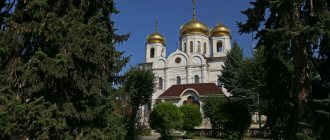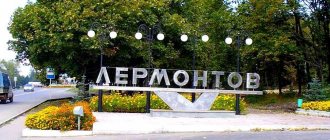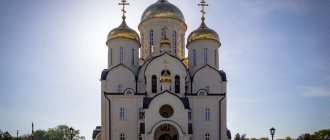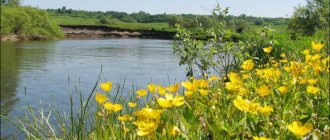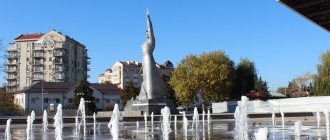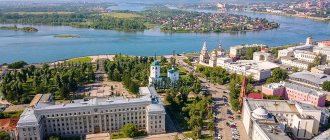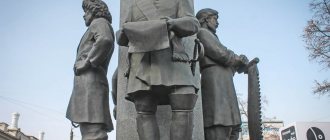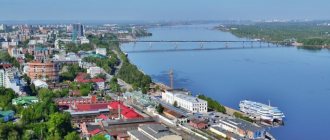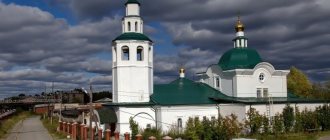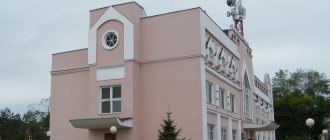The city of Kislovodsk is located in the Stavropol Territory. This is the southernmost of the resort towns of the Caucasian Mineral Waters. It is located 38 km southwest of Pyatigorsk, 21 km from Essentuki and 64 km from the Mineralnye Vody station of the North Caucasus Railway. Population - 149.496 thousand people (2009), area - 71.83 sq. km. The number of sunny days per year in Kislovodsk is almost twice as large as in Pyatigorsk or Essentuki. The foundation and name of the city is associated with the source of acidic mineral water Narzan. Bogatyrskaya water is how “nart sane” is translated from Turkic.
Foundation of the city
The first description of narzan was found in the notes of the chemist J. Reinegs in 1784. In 1793, academician, traveler and zoologist Peter-Simon Pallas explored the sour spring and compiled a description of the Narzan spring. According to the testimony of other travelers, baths for bathing in Narzan were carved out of stone near the main spring. One of them stands as an ancient monument near the building of the resort museum. The founding date of the resort is considered to be 1803, when the Emperor issued a decree recognizing the city of Kislovodsk and the entire region of the Caucasian Mineral Waters as a healing area of national importance. In 1808–1809, the first official visit by patients to the resort took place.
Geographical position
There are attractions in every city. No matter where Kislovodsk is located, it is worth visiting. After all, there are probably interesting natural and historical monuments, theaters, parks, and perhaps even museums. But everyone’s concept of proper rest is different. Some people like to spend their holidays in the southern regions, while others like the harsh Murmansk climate. Before determining whether the city discussed in today's article is worth considering as a holiday destination, it is necessary to answer a question, the answer to which was familiar to the above-mentioned literary character.
Kislovodsk is located approximately two hundred kilometers from the city, which is equidistant from the equator and the North Pole. We are talking about Stavropol. Information about this city provides an answer to the following question: where, in what region is Kislovodsk located? The city is part of the Stavropol Territory. This is Russian territory. Located in the central part of Ciscaucasia. But until 1943, this question was answered differently. In 1935, Stavropol was renamed Voroshilovsk. Before that it was called Stavropol-Caucasian. If a Soviet person had been asked in pre-war times about where, in what region, Kislovodsk is located, he would certainly have answered - in the Ordzhonikidze region.
In the first decades of the existence of the USSR, the names of regions, cities, and streets often bore the names of political figures and revolutionaries. But figures, as a rule, did not enjoy honors for long. At the end of the 30s they were regularly arrested, exiled, and shot. As a result, the need arose for another change of one or another toponym.
These unnecessary troubles still cause confusion to this day, confusing people who are poorly acquainted with the history of their region. But the city discussed in today’s article has always been called what it is called today. There was not a single revolutionary worthy of giving this settlement (at least temporarily) his name.
Where is the city of Kislovodsk? There is only one answer to this question. There is no city with the same name anywhere else. Kislovodsk itself has never been part of another region. We figured out in which region the city of Kislovodsk is located. Where exactly? In what part of the Stavropol Territory? It is worth telling in more detail about the territory, which is located in the central part of the Ciscaucasia.
Among the constituent entities of the Russian Federation, the 45th largest area is occupied by the region where Kislovodsk is located. What other cities are included in it? There are 19 of them in total, the largest is the regional center, that is, Stavropol. More than 400 thousand people live here. Below is a list of the five largest cities in the Stavropol Territory. Where is Kislovodsk on this list? There are only two settlements in the region, to which this city is inferior in area and population.
| City | Population | Area |
| Stavropol | 433 577 | Stavropol |
| Pyatigorsk | 145 836 | Pyatigorsk |
| Kislovodsk | 129 861 | Kislovodsk |
| Nevinnomyssk | 117 676 | Nevinnomyssk |
| Essentuki | 107 104 | Essentuki |
Where is Kislovodsk located? In what field? We already know the answer to this question. But thanks to the table, we now know which urban district Kislovodsk belongs to. Where is this locality located? In what area? Kislovodsk is located in the city district of the same name.
Story
In 1822, a restaurant with a colonnade and a wide staircase descending to the park and to the spring was built, as well as a grotto (now Lermontovsky) and a Kursaal (now a theater). A hotel and resort park are under construction. There are many places in Kislovodsk associated with the name of M.Yu. Lermontov. Composer M. Glinka and artist N. Yaroshenko were treated here. In 1848–1858 the Narzan Gallery appeared. With the construction of the highway and railway from Mineralnye Vody to the resort, the number of patients coming here is also increasing. At the end of the 19th century, a mineral water bottling plant was opened, and additional resort buildings were built. At the beginning of the century, intensive construction of hotels and dachas was underway. Kislovodsk received city status in 1903. During the First World War, the resort became a hospital for the wounded. After the revolution, the resort developed intensively. 20 new sanatoriums were built and 22 sanatoriums were established on the basis of private dachas. New deposits of healing waters were discovered. A mud bath with silt sulfide mud from Lake Tambukan was built. The resort, damaged during the Great Patriotic War, was restored by the early 50s. The resort was expanded, which became the country's hospital base and was awarded the Order of the Great Patriotic War, 1st degree. City Day is celebrated on the second Saturday of September.
Kislovodsk
Prehistory of the city
The first information about the healing power of the mineral waters of the Caucasus reached the Russian government at the beginning of the 17th century. Research into “magic water” began under Peter I. Having visited Carlsbad, the tsar became convinced of the healing properties of mineral waters and, returning home, created an expedition to search for springs in Russia. As a result of an active search, the Lipetsk and Olonets marcial waters were discovered, which Peter visited personally.
Information about the wonderful spring Narzan was obtained during the Persian campaign. In 1717, Peter the Great’s physician, Gottlieb Schober, arrived in the Caucasus in search of mineral waters “that can be used for diseases.” First of all, Schober described the hot waters of the Terek, giving them the name “St. Peter’s greenhouse.” Subsequently, these springs became known as the Bragun Baths. Then the life doctor described several more springs - the hot sulfur waters of Pyatigorye. Schober's message ended with a description of a sour spring. The life doctor did not see this spring, but its fame spread “throughout the entire land of the Circassians.” After the victory of the Russian Empire in the war with Turkey, Russia received Kabarda along with the mineral springs located here. The Kislovodsk valleys, together with the Narzan spring, remained outside the Russian Empire for a long time. The place where the famous sour spring was located did not belong to anyone.
Information about Caucasian mineral springs brought to Russia by Schober was forgotten for a long time. New interest in them appeared only during the reign of Catherine II, who considered herself a continuator of the ideas of Peter I. An expedition was again sent to the Caucasus. Information about how successful it was has not reached our days. At the end of the 18th century, on the initiative of the Russian Academy of Sciences, another expedition was sent to the Caucasus under the leadership of the then famous academician Peter Pallas. By that time, maps had already been created, using which Pallas was able to find the famous Narzan and describe it in detail. Near the main spring, several stone-hewn baths were discovered, intended for bathing. One of these baths is located today in Kislovodsk near the building of the resort museum and serves as a kind of ancient monument. Following the expedition, Pallas made a report that was met with great interest by many scientists of the Russian Academy of Sciences.
Studies of the acidic spring were carried out even after Pallas’s business trip. In 1798, the State Medical College decided to use acidic water to treat military personnel. In the summer months, they had to come to the source and drink the water under the supervision of doctors. After some time, a plan was developed to build a hospital and fortification next to the sour spring. The military personnel located in the fortification had to take care of the safety of the visiting patients.
Foundation of the fortress
In 1803, permission was received to build a fortress next to the Sour Well, as the source was then called. The appearance of the fortress meant that the Kislovodsk Valley now belonged to the Russian Empire. In the same year, by imperial decree, the Caucasian Mineral Waters region was recognized as a healing area of national importance. A trip to the Sour Well at the end of the 18th century was considered unsafe. The patient was usually transported accompanied by a detachment of Cossacks. The detachment was often attacked by gangs of mountaineers. However, not all of the mountain population were unfriendly towards the Russians. Eyewitnesses said that the Abaza people who lived near the fortification willingly contacted visitors, supplying them with food. From the Kislovodsk fortification, only gates and massive walls have survived to this day.
The development of the new resort was uneven. The first work on the improvement and protection of Kislovodsk began in 1804. The area near the source was fenced with a wooden dam. At the suggestion of Peter Pallas, the waters of the Olkhovka River were diverted through a canal to the Berezovka River. Thus, it was planned to protect Narzan from the spring flood. However, these measures did not save the source from the heavy rains of 1804–1805. After Narzan was covered with sand, it took at least a week to get there. When the source was cleaned, it was not possible to restore the previous volume of the pool.
The sick who came to the waters lived right in the tents. Despite the huge number of inconveniences, about three hundred patients visited the resort in 1810. We did not use stone baths. The procedures were carried out in a shallow hole dug next to the source. The first wooden baths appeared in Kislovodsk in 1812. The bathhouse had 2 sections - women's and men's. It was possible to take a bath only in cold water. Those wishing to undergo procedures in warm water had to take care of heating it themselves. By 1817, special boilers for heating water were installed next to the baths. However, such a bath was quite expensive, and only very wealthy people could afford it. Everyone else was still forced to be treated in cold water.
Stanitsa Kislovodskaya
The first private houses of the future city began to appear in 1819. They were built by retired soldiers and recruits. The oldest part of modern Kislovodsk is called the soldiers' settlement. The settlement's population grew rapidly. To protect the resort from raids by the mountain population, a huge number of service people were required. A few years later, the Kislovodsk village was founded on the site of the modern city.
The year 1823 was marked by several significant events for Kislovodsk. A hexagonal wooden well surrounded by a fence was built around the Narzan spring. The well was called the Myasnikovsky log house and existed for more than thirty years. Kislovodsk Park was laid out on both sides of Olkhovka. A restaurant was built with a spacious dance hall for balls and rooms for resort guests. At the end of the 1820s, a new bathhouse was completed, consisting of two large Kalmyk tents, which were covered with cloth. The bathhouse had 16 baths for receiving warm narzan. Another bathhouse was built in the early 1830s. There were 8 baths for heated narzan and 2 swimming pools for swimming in flowing narzan. In the mid-1840s, Kislovodsk experienced several heavy rainfalls. Streams of dirty water overflowed the Olkhovka riverbed, flooding the springs and the park. The right bank of the river needed urgent strengthening. The stone embankment was erected in the shortest possible time.
In 1851, a site for resort construction was first allocated on the territory of the soldiers' settlement. By the mid-1850s, the Kislovodsk settlement occupied a significant territory. At least thousands of people lived in the settlement. There were 264 houses and a wooden church here. The settlement was administered by the commandant of the Kislovodsk fortress. The resort continued its development. In addition to mineral baths, patients could also receive gas treatments. Carbon dioxide was collected on the surface of the source and carried through zinc pipes to a special room where gas showers, inhalations and baths were installed. Gas treatment technologies were borrowed from the best European resorts. Similar treatment was widely used in Kronthal, Marienbad, Pyrmont and other resort towns.
In the second half of the 19th century, Kislovodsk was already well landscaped. The number of private properties has increased significantly. A whey establishment was built at the resort. The treatment season began in July and ended in mid-September. The sanitary condition of the soldiers' settlement in those years caused serious concern. Household waste and waste products of people and animals were usually dumped behind houses in the open air, which contributed to the spread of infectious diseases. Such landfills were especially dangerous after heavy rains, which were quite common in these places.
By the end of the 19th century, the population of Kislovodskaya Sloboda grew to six thousand people. The construction of a railway line from Mineralnye Vody was of considerable importance for the development of the future city. The first train arrived in Kislovodsk in 1893. Since then, the number of visitors to the resort has increased dramatically. In 1893, more than five thousand people were able to undergo treatment at the resort. The construction of private houses has increased significantly. The Narzan capture well has already fallen into disrepair. In 1894, a new captage was built, which has survived to this day. The Lermontov spring was discovered on Olkhovka. In 1895, a water supply was installed from it. There was very little fresh water at the resort. At the beginning of the twentieth century, the White Coal hydroelectric station appeared in Kislovodsk, from which the resort received its first electric current. The Kursaal is considered one of the most interesting buildings in Kislovodsk at the beginning of the 20th century. Together with the station building, it represented a single architectural ensemble. Today this building houses the city theater named after M. Gorky.
The constantly increasing number of visitors to Kislovodsk required the construction of new baths. In 1901, the construction of the Main Baths began according to the design of the architect A. Klepinin. The building was built over three years and has managed to survive to this day. In 1904, the resort added a narzan pump and 10 bath cabins in the Ganeshina boarding house. Today there is a clinic named after. V.I. Lenin.
City status
Only 100 years after its actual founding, Kislovodsk finally received city status in 1903 and its first annual budget, amounting to 30 thousand rubles per year. For the further growth of the city, almost one and a half thousand dessiatines of land that previously belonged to the soldiers' settlement were allocated. By that time, a hospital with 80 beds had already appeared in Kislovodsk. The hospital was intended for low-income citizens. Treatment there was completely free. In the vicinity of Kislovodsk, new private houses appeared, which were built by representatives of the service nobility. The merchants, unlike the nobles, built not only estates for personal needs, but also small cottages for rent.
At the beginning of the twentieth century, the resort part of Kislovodsk was located on the slope of Krestovaya Mountain. On Poplar Alley there were residential buildings for the resort's medical staff and narzan baths. In 1903, a hotel was built on Poplar Alley. Rebrova Balka served as a pasture for livestock. Today there is a new resort area here. In 1914, 42 thousand patients visited Kislovodsk. The increase in the number of visitors to the resort has led to the need to increase the construction of hotels and inns.
According to the “List of populated places of the Terek region” for 1915 (according to 1914), in the city of Kislovodsk, Pyatigorsk department, there were 1,498 courtyards (houses), in which 15,178 people lived, of which 5,962 were indigenous residents (3,014 men and 2,948 women), settled newcomers - 3,204 (1,516 men and 1,688 women), temporary residents - 6,012 (3,192 men and 2,820 women). All residents were Russian Orthodox. 1,496 acres of convenient land were assigned to the city. The document lists institutions and describes the infrastructure of Kislovodsk: “Cathedral, bailiff’s chamber, Kislovodsk city government, Kislovodsk Sloboda administration, office of the Caucasian Mineral Waters group, postal and telegraph office, branch of the State Bank, branch of the Azov-Don Commercial Bank, Kislovodsk Mutual Credit Society, savings and loan partnership, two printing houses, three cinematographs, two libraries, the alabaster factory of Shakhnazarov and the companies of Ochakov and Shakhnazarov, two flour mills of Doctor Rossini and Mordovtsov, brick factories of Zimokh and Grigoriev, two soap factories of Senchukov, there is a state park, the Narzan spring , 2 gymnasiums (male and female), 4-grade city school, seven city one-class schools, many different balneological institutions. During the summer season, up to 20 thousand patients arrive. Chamber of the magistrate of the 4th precinct of the Pyatigorsk district, judicial investigator of the 2nd precinct of the Pyatigorsk department, tax inspector of the Pyatigorsk district.”
Soviet period
Soviet power was established in Kislovodsk only on March 17, 1920. The restoration of the sanatorium and resort facilities begins. By 1920, all Russian resorts had already been nationalized. During the Soviet years, many new boarding houses and holiday homes were built. After the Civil War, a huge number of Red Army soldiers seriously wounded during the Civil War were treated in the sanatoriums of Kislovodsk. In the 20-30s of the last century, at least twenty new sanatoriums were built in the city. Holiday homes built before the revolution were reconstructed. Many mansions that belonged to the Russian elite before the revolution are becoming sanatoriums.
In 1928, in the very center of Kislovodsk, the October Baths building with 60 cabins was built. The architect of the project was P. Eskov. The building of the October Baths was distinguished not only by its noble external forms, but also by a high level of convenience and compact internal layout. Also in 1928, the Narzan bottling plant was rebuilt and mechanized in the city. In 1934, a mud bath appeared in Kislovodsk at the Fortress sanatorium. The hospital could simultaneously admit up to three hundred patients. Therapeutic mud was imported from Lake Tambukan. One of the most famous health resorts in the city is the sanatorium named after Sergo Ordzhonikidze, designed for 500 beds. The Red Stones sanatorium was built according to the design of the architect Merzhanov. The health resort is located in the center of the park, which provides the most comfortable conditions for relaxation.
During the Great Patriotic War, the Nazi invaders came to Kislovodsk. The occupation of the city lasted for five months, which could not but affect the resort industry of Kislovodsk. The damage caused to the city exceeded 400 million rubles. After its liberation from the German occupiers, the city turned into the largest hospital base in the USSR. More than six hundred thousand wounded Soviet soldiers were treated in the health resorts of Kislovodsk. In 1941, more than thirty hospitals were opened in the city.
The post-war restoration of the city itself proceeded at an accelerated pace. By the beginning of the 50s, the city's urban and resort facilities had been completely restored. In 1950, 125 thousand people were able to relax at Kislovodsk resorts. When the sanatoriums and rest houses that existed before the war were completely restored, the construction of new health resorts began. Holiday homes “Moscow”, “Mountain Peaks”, “Piket”, “Velingrad”, “Kolos”, “Dzhinal” and some others appeared in the city. “Picket” and “Mountain Peaks” were built according to a design created by the architect A. A. Ol. In 1952, the Mountain Air sanatorium was built. The project involved construction in a palace style. The Kolos sanatorium was built in 1955 thanks to the Rossiya collective farm in the Novoaleksandrovsky district of the Stavropol Territory. The sanatorium was intended for recreation and health improvement of collective farm workers. All new holiday homes were equipped with modern equipment for those years. The health resorts created optimal conditions for treating patients.
The state spent at least six hundred million rubles on the further development of the resort, its reconstruction and improvement. In the 50s, a number of hydrogeological surveys were carried out in the vicinity of Kislovodsk, which made it possible to increase the reserves of narzan for balneological purposes several times. In the mid-70s, a resolution was adopted “On measures for the further development of the resort city of Kislovodsk in 1975–1980.” During these same years, the city became a year-round resort. In 1980, for the selfless work of the city’s workers in treating and restoring the health of soldiers of the Soviet Army, Kislovodsk was awarded the Order of the Great Patriotic War, 1st degree.
Kislovodsk today
The current stage of development of Kislovodsk began in 1992 after the signing of the Decree “On the Specially Protected Ecological Resort Region of the Russian Federation – Caucasian Mineral Waters”. This document played a huge role in preserving the resort beloved by many Russians. The health resort industry once again needed restoration, now after the destruction caused to it by the economic crisis. Recovery proceeded at a rapid pace. Today, Kislovodsk holiday homes continue to be popular among Russians.
Kislovodsk Airport
There is an airport in Kislovodsk that has ceased operations. The nearest operating airport is in the city of Mineralnye Vody. The distance from Kislovodsk to the airfield is 53 km. The airport has the status of a federal facility and is the largest airfield in the Stavropol Territory and the North Caucasus Federal District. Airport type: civil. It works every day around the clock.
The airport serves aircraft of major Russian and foreign airlines: Yakutia, UTair, Aeroflot, FlyDubai, S7 Airlines, Nordwind Airlines. Popular destinations of regular and charter flights: Dubai, Moscow, Rostov-on-Don, Istanbul, St. Petersburg. The annual passenger traffic is more than 2.4 million people.
Acidic waters
The city is relatively young. The valley in which it is located was not yet inhabited at the end of the 18th century. There is information that somewhere nearby there was an Abadzin settlement. The exploration of the territory continued for more than two hundred years. The person who first became interested in these lands, or more precisely, in the source of Narzan, was Peter-Simon Pallas.
Where did this name come from - Kislovodsk? In March 1803, Alexander II issued a decree on the construction of a fortress where the “sour waters” were located. The fortification was built and given a name, which was the first thing that came to mind. The fortress was called “Sour Water” and belonged to the Azov-Mozdok defensive line. It was located on a hill, on both sides of which rivers flowed, which received the names Berezovka and Olkhovka. The source of Narzan was located within a cannon shot of the citadel.
Narzan gallery
This place is known not only for its healing properties, but also for its extraordinary beauty. The Narzan Gallery is an architectural monument of the 19th century, located in the central part of the city, at the very beginning of the Resort Park. The architecture of the building is reminiscent of the English Gothic style. At the end of the 19th century, so-called samovars were placed in the courtyard to heat Narzan. They say that Mikhail Lermontov himself once drank from them. Ades: Comintern street, building 2.
Sanatoriums
There are more than thirty health resorts operating here today. Among them it is worth mentioning the following:
- "Dream".
- "Torch".
- "August".
- "Victoria".
- "Valley of Narzans"
- "Dawn".
- "Cascade".
- "Horizon".
- "Fortress".
- "Elbrus".
Where are the best sanatoriums in Kislovodsk? “Fortress” is located at Mira Avenue, building 9. “Zarya” is Prudnaya Street, building 107. The Ordzhonikidze Sanatorium is located at Lenin Avenue, building 25.
Attractions
Finally, we get to the most interesting part of today's story. If you make a small list of the most famous attractions of Kislovodsk, it will include the following objects:
- Resort park.
- Narzan gallery.
- Flower calendar.
- Ropeway.
- Resort Boulevard.
- Air Temple.
- Singing fountain.
- Cascade staircase.
Where each of these attractions is located in Kislovodsk is stated below.
Unspoken anthem
Ah, Kislovodsk, my love, City of the sun, living water, Blue mountains, unearthly beauty, Hello, gray Elbrus, Hello, native city, Kislovodsk, we are on friendly terms with you. I remember every dream - in Kislovodsk with you, the wonderful air was intoxicating, your tender gaze beckoned. We will sing this song again.
Ah, Kislovodsk, my love! I see a fairy-tale world here. Oh, you are my Valley of Roses, I am always in your captivity.
By the pond in the hour of parting, we vowed to love the Caucasus. And the coin has long since sunk to the bottom, Inviting us once again And again for the umpteenth time I meet you, Caucasus. And again I'm in love And again I have a dream, How we walk through the park together
Ah, Kislovodsk, my love! I see a fairy-tale world here. Oh, you are my Valley of Roses, I am always in your captivity.
Words and music by Karina and Margarita Talverdiev, performer - V. Eremenko.
Transport
The railway station of the same name is located in Kislovodsk. It is the final branch that originates in Mineralnye Vody. The highway connects the city with the resorts of Dombay and Teberda. Where is the bus station in Kislovodsk? At the address: Promyshlennaya street, building 4. The nearest airport is Mineralnye Vody. It is located 60 km from Kislovodsk.
Internal transport is represented by more than thirty routes. From the bus station you can get to Anapa, Astrakhan, Volgograd, Gelendzhik, Grozny, Krasnodar, Nalchik. The bus station is going through hard times. Reconstruction is currently underway. The tram system has existed since 1904. However, it serves exclusively for the transportation of goods.
Singing fountain
This attraction has been delighting city residents and its guests since 2016. There was once an old fountain here, but it has not functioned for more than 20 years. Then the city authorities decided to improve the area and at the same time install a new, modern structure. This is one of the largest color and musical fountains in the south of Russia. It covers an area of 400 square meters. meters. Where is the singing fountain in Kislovodsk? Vacationers walking along Kurortny Boulevard will not pass by this attraction.

